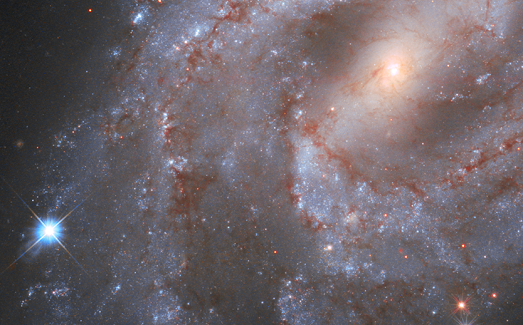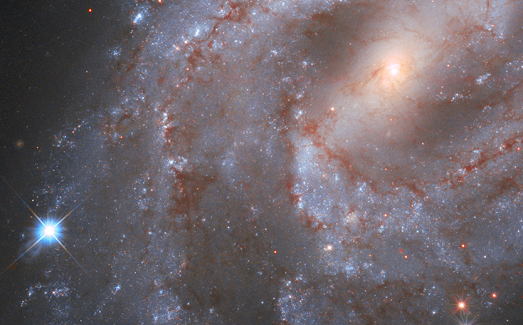We know that massive stars may experience a supernova explosion at the final stage of their evolution. This explosion is extremely violent, and the brightness produced may exceed the brightness of an entire galaxy. Apart from stellar evolution, supernova also appears in some binary star systems that contain a white dwarf. When a white dwarf exceeds the critical mass after absorbing a large amount of materials from its companion star, it will become a "Type Ia supernova".
Supernova explosions are almost unpredictable, but NASA has released a time-lapse movie recently, showing the evolution of a white dwarf into a supernova. The supernova 70-million light-years away is named SN 2018gv, and is located in the barred spiral galaxy NGC 2525 in the constellation Puppis. The Hubble Space Telescope began observing SN 2018gv in 2018, and spent about one year to take images of it continuously. In the time-lapse movie, we can see that its brightness had increased dramatically in a short period of time, reaching a peak at 5 billion times that of the Sun, and decreased slowly afterward.
Understanding the evolution of supernovae is very important to the development of astronomy and cosmology. Since the type Ia supernovae have the same origin, they have the same peak brightness too. Astronomers can use them to measure the distances between different galaxies and the Earth (for details, please search the keyword "standard candles"), and calculate the rate of the expansion of the universe to deduce the fate of our universe.
More information: https://www.nasa.gov/feature/goddard/2020/hubble-watches-exploding-star-fade-into-oblivion/




